Description of Brookhaven Lab Tours
Tour Date: Tuesday, December 10, 2024
Important Notice
- Guests must show an official photo ID to enter BNL (e.g., driver's license, passport)
- Some tours may visit active research facilities
- Guests must wear long pants and flat, closed-toe shoes Access may be restricted if proper attire is not worn
- Tours to NSLS-II
- NSLS-II is posted a Controlled Area
- Guests will be required to read and sign the following documents: briefing outline and training waiver for person under escort
- Guests must follow the instructions of their trained BNL escorts and remain with them at all times
- All visitors must be 16 years old to be permitted on the NSLS-II experimental floor
- The conference organizers will provide further guidance as needed
- Unless noted, tours will not cost any funding
About Brookhaven National Laboratory
Facility Description
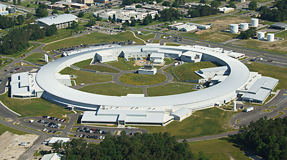
National Synchrotron Light Source II (NSLS-II)
NSLS-II is a state-of-the-art, 3 GeV electron storage ring designed to deliver world-leading intensity and brightness, and will produce x-rays more than 10,000 times brighter than the original NSLS. The facility offers scientific and industrial researchers an array of beamlines with x-ray, ultraviolet, and infrared light to enable discoveries in clean and affordable energy, high-temperature superconductivity, molecular electronics, and more. Overview | Image Library
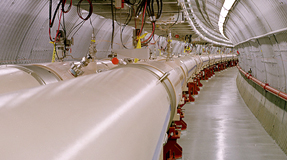
Relativistic Heavy Ion Collider (RHIC)
RHIC is a world-class particle accelerator at Brookhaven National Laboratory where physicists are exploring the most fundamental forces and properties of matter and the early universe. RHIC accelerates beams of particles (e.g., the nuclei of heavy atoms such as gold) to nearly the speed of light, and smashes them together to recreate a state of matter thought to have existed immediately after the Big Bang some 13.8 billion years ago. RHIC Science | Image Library
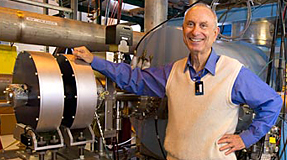
R&D Energy Recovery Linac (ERL)
The R&D Energy Recovery Linac in Building 912 is a proof of principle experiment toward eRHIC. It consists of a superconducting RF (SRF) electron gun, designed for up to 0.5 amperes CW at 2 MeV, and 5-cell SRF accelerating cavity designed for 20 MeV energy gain in the ERL. The facility includes a high quantum efficiency photocathode development laboratory.
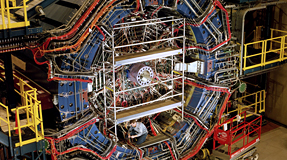
STAR Detector
The STAR detector specializes in tracking the thousands of particles produced by each ion collision at RHIC. It is used to search for signatures of the form of matter that RHIC was designed to create: the quark-gluon plasma (QGP). Detecting and understanding the QGP allows us to understand better the universe in the moments after the Big Bang, where the symmetries (and lack of symmetries) of our surroundings were put into motion. STAR Collaboration Website
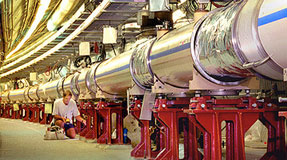
Superconducting Magnet Division (SMD)
The Superconducting Magnet Division (SMD) designs and builds varied superconducting magnets for use in both particle accelerators and experimental facilities throughout the world. Current projects include the HTS solenoid for BNL's Energy Recovery LINAC, e Lens Solenoid LARP, APUL, correctors for J-PARC, Linear Collider Final Focus and high field magnet research and development.
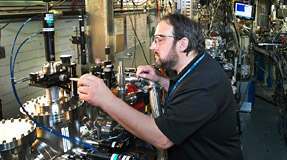
Accelerator Test Facility (ATF)
The Accelerator Test Facility (ATF) is a proposal driven, Program Advisory Committee reviewed facility that provides users with high-brightness electron- and laser-beams. The ATF pioneered the concept of a user facility studying properties of modern accelerators and new techniques of particle acceleration over 25 years ago. It remains a valuable resource to the user community. ATF serves the U.S. DOE Accelerator Stewardship Program. Science Highlights | Fact Sheet
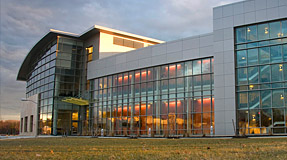
Center for Functional Nanomaterials (CFN)
The CFN explores the unique properties of materials and processes at the nanoscale. The CFN is a user-oriented research center whose mission is to be an open facility for the nanoscience research community and advance the science of nanomaterials that address the nation's energy challenges. About CFN | Image Library
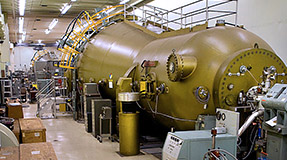
Tandem Van de Graaff
The Tandem Van de Graaff Facility consists of two 15-megavolt electrostatic accelerators capable of delivering continuous, or high-intensity pulsed ion beams in a wide range of ion species at various energies to experimental chambers that are available to researchers on a full cost-recovery basis.
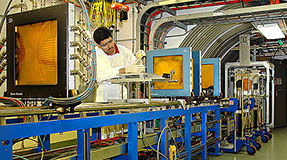
NASA Space Radiation Laboratory (NSRL)
The NASA Space Radiation Laboratory (NSRL) uses beams of heavy ions from the accelerators that feed RHIC to simulate space radiation and study its effects on biological specimens—such as cells, tissues, and DNA—and industrial materials. The National Aeronautic and Space Administration (NASA) and the DOE Office of Science partnered to build NSRL to identify materials and methods that reduce the risks astronauts will face on future long-term space missions.
Note: This tour is limited to the first 20 registered participants.
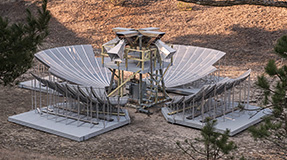
BMX Radio Telescope
Cosmologists have primarily used optical telescopes—telescopes that observe space through visible light—to study galaxies and their distributions in space and time. These telescopes are extremely advanced, and ones like the Large Synoptic Survey Telescope (LSST) now under construction in Chile are fully optimized for cosmological applications; however, optical telescopes are also extremely expensive to build. That's why Brookhaven is investigating radio telescopes as an alternative, cost-effective way to observe the universe.



